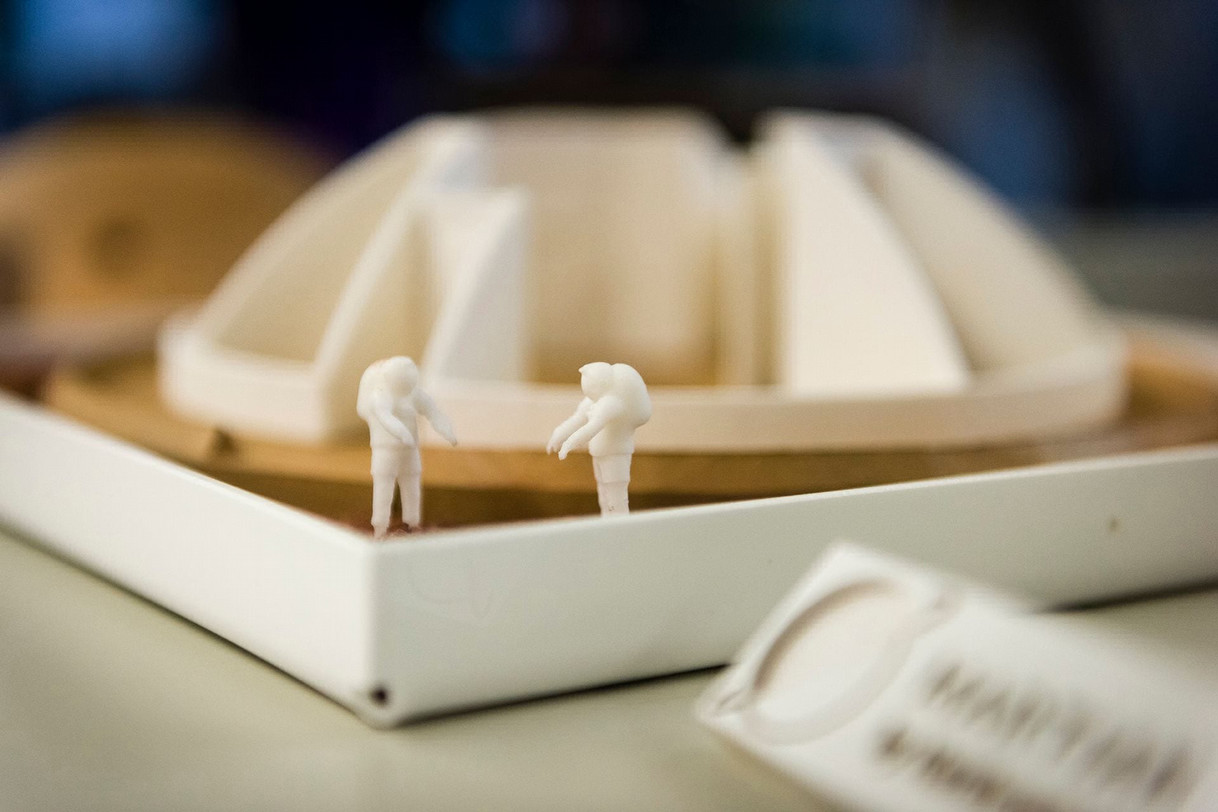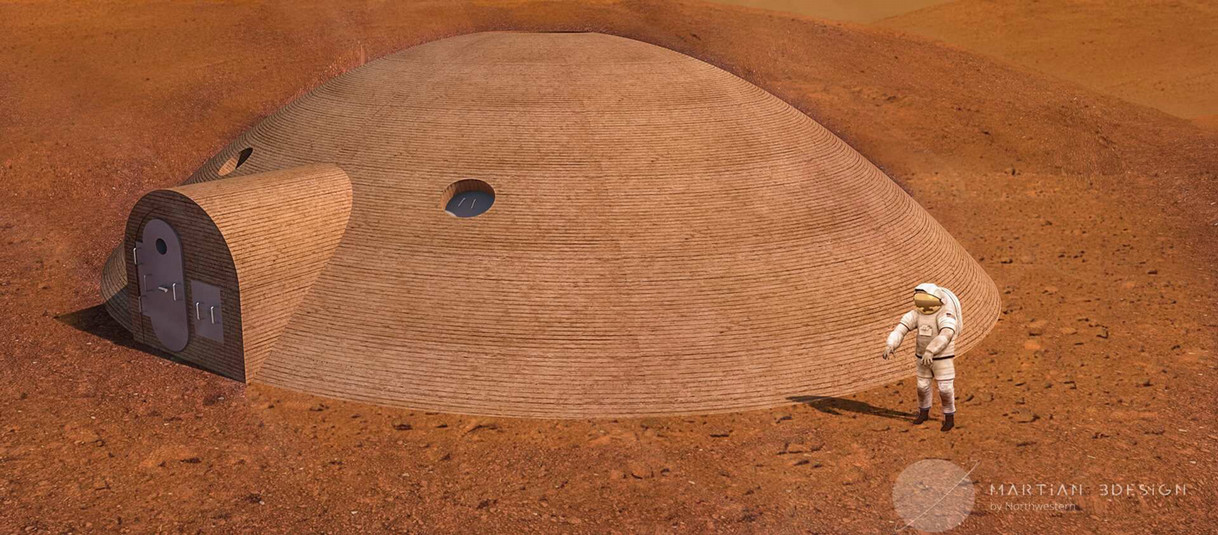Gianluca Cusatis and Team Awarded Best Paper 2022
If Mars habitation still seems like science fiction, you may need to catch up on your reading. Under the guidance of Professor Gianluca Cusatis, Ph.D. students Matthew Troemner and Elham Ramyar, master's student Jonathan Meehan, postdoctoral research fellow Nima Goudarzi, and Benton Johnson, principal engineer at Skidmore, Owings, and Merrill, were awarded “2022 Best Paper” by the ASCE Journal of Aerospace Engineering for their paper, “A 3D-Printing Centered Approach to Mars Habitat Architecture and Fabrication.”
The award-winning paper “presents the rationale for the Martian habitat designed by Northwestern University, in partnership with Skidmore, Owings, and Merrill, for submission in NASA’s 3D-Printing Habitat Challenge Virtual Design Levels. The habitat includes housing for four astronauts, room for one year of supplies, 93 m2 living space, and various prescribed volumes of equipment, to name a few. Defined by a unique outer-parabolic and inner-hemispherical shell, the proposed habitat takes a 3D-printing-centered approach for its architecture and fabrication.”
The team will be honored at the American Society of Civil Engineers (ASCE) Earth & Space Conference. This year’s conference will be held April 15-18 at Florida International University in Miami, Florida.
This award comes after years of research. Northwestern Magazine first ran a story on the group’s endeavors in 2018. Cusatis led the University’s first-ever workshop on “the potential of large-scale 3D printing” in 2017. Ever since, the Cusatis Group has explored large-scale 3D printing, recently receiving $1.5 million in funding from the Engineer Research and Development Center (ERDC) from the Army Corps of Engineers for their project, “Multi-Scale Additive Manufacturing of Ultra High-Performance Fiber Reinforced Concrete: Experiments and Computations.”
“The allure of extraterrestrial 3D-printing lies not just in its sheer complexity, but also in the radical innovation it demands,” said Matthew Troemner. Troemner graduated with his Ph.D. from Northwestern in 2022.
“Designing structures for Mars compels us to rethink every aspect of construction and habitation from the ground up,” he said. “This includes resource sourcing, material fabrication, design, construction, and commissioning. The challenge is to move beyond the confines of traditional Earth-based construction methodologies, embracing innovative approaches that cater to the unique demands of the Martian environment.”
So, how does envisioning habitation on Mars impact Earthlings?
“The significance of our research into Martian 3D-printing extends far beyond its space-bound applications,” Troemner said. “Large-scale 3D printing on Earth is a rapidly growing industry in sectors such as low-income housing, disaster relief, and sustainable building practices aimed at reducing carbon footprints. By envisioning designs and materials for the Martian landscape, we may make discoveries that terrestrial researchers have overlooked. While the practical deployment of our technology on Mars might be a couple of decades away, its benefits for Earth could be realized much sooner.”

Northwestern - Habitat Model 8 - Reduced - Joel Wintermantle
One day, humans will land on the surface of Mars, and Northwestern civil engineers will have been a part of the research that made it happen.

